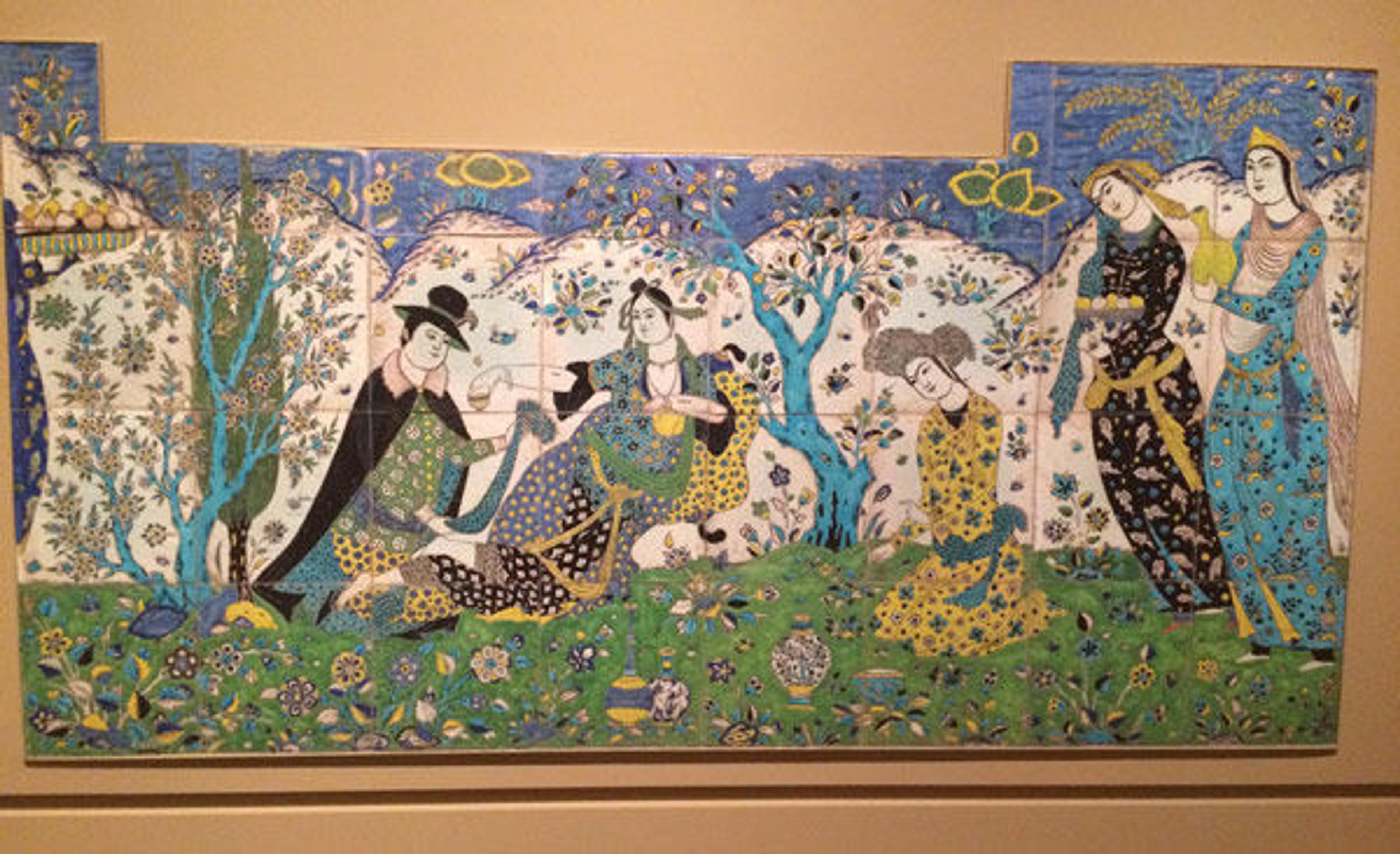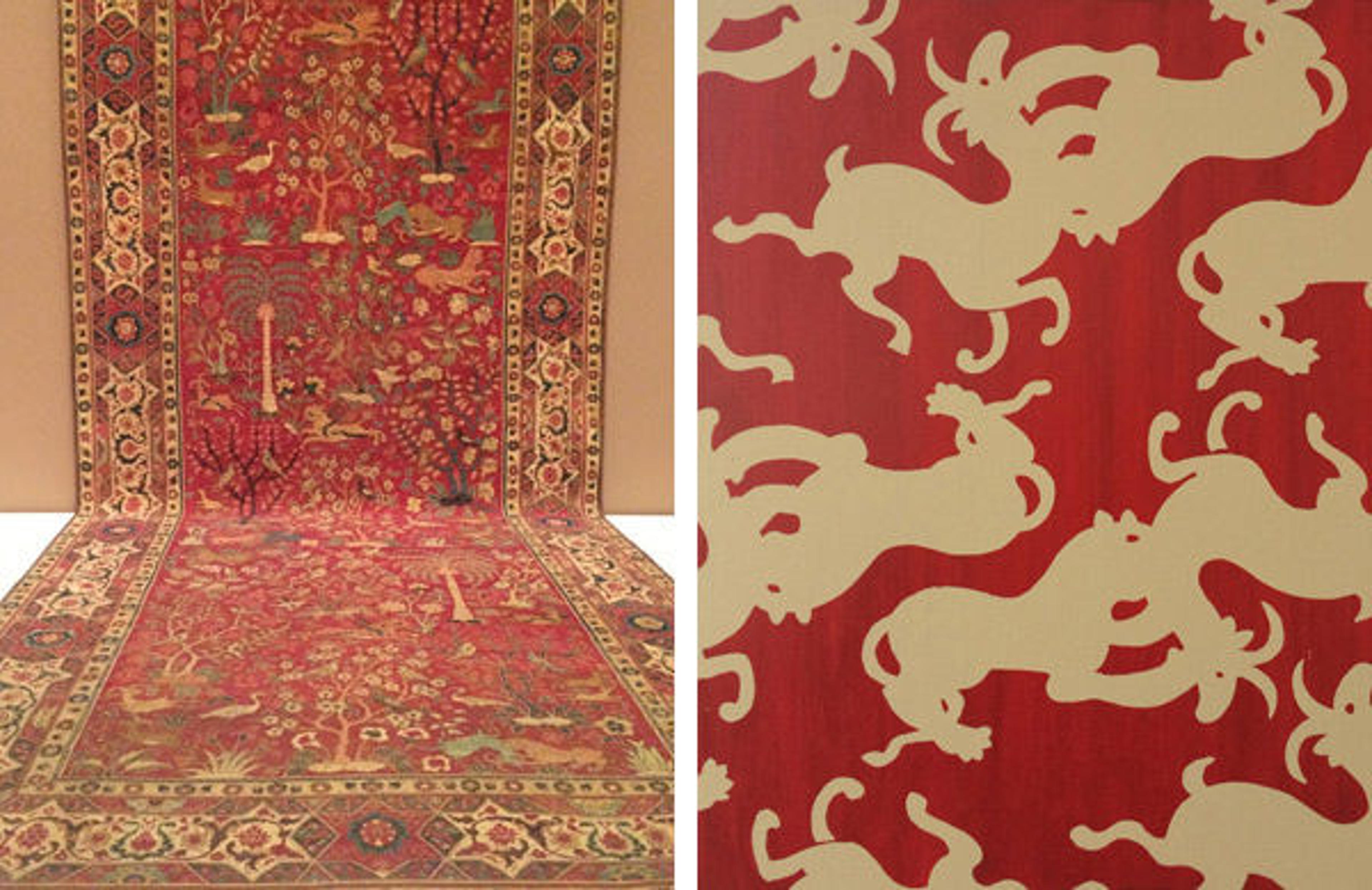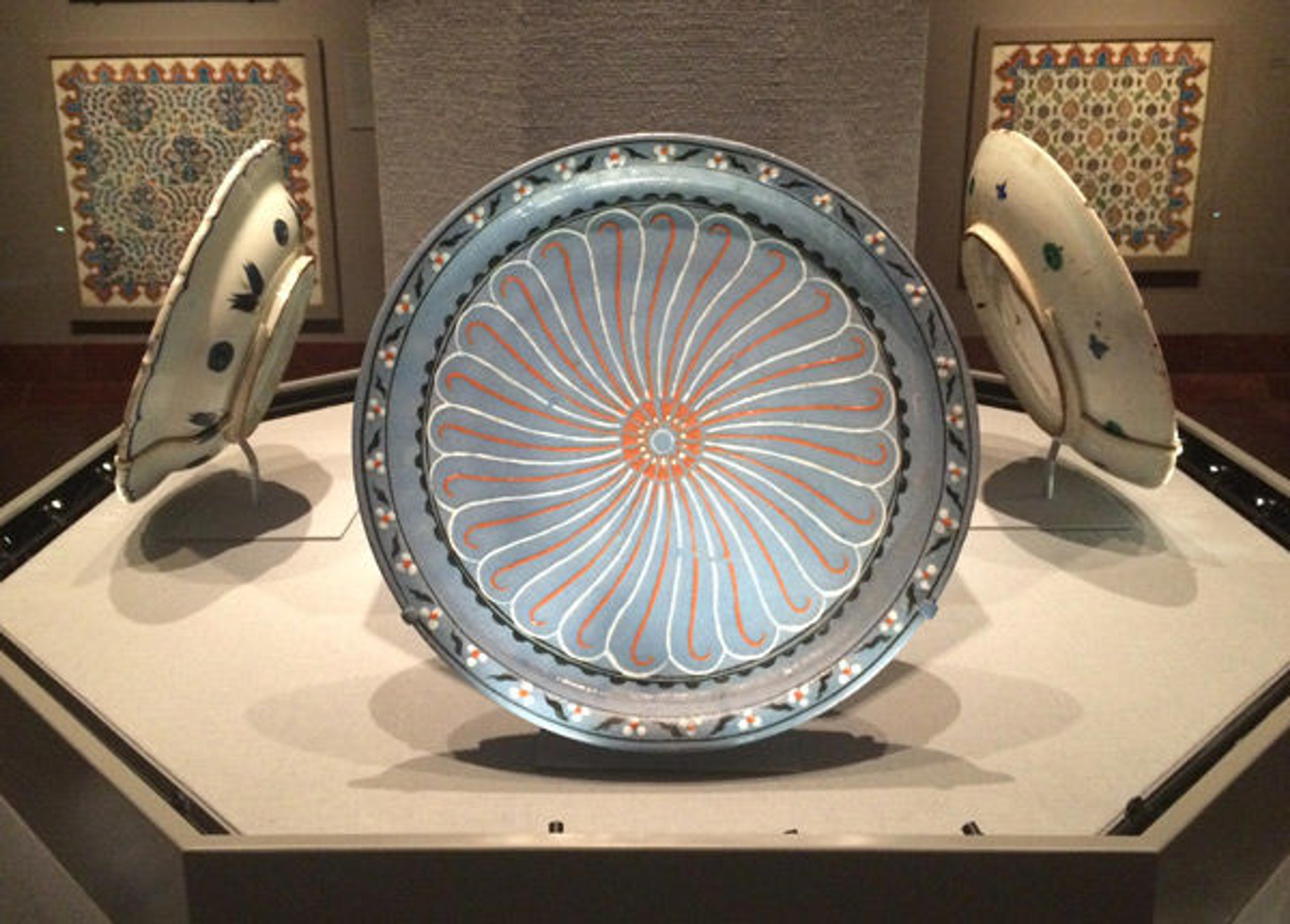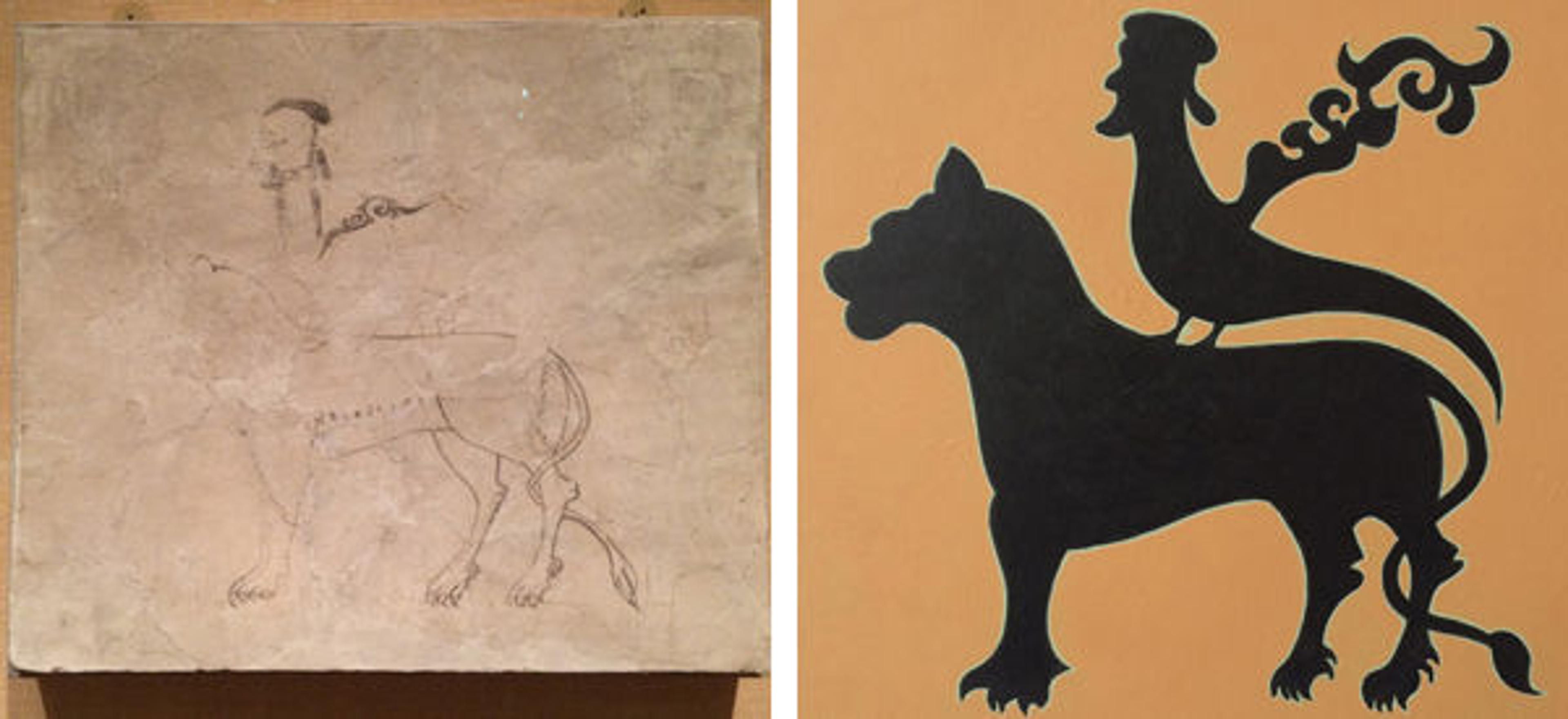Tiles, Carpets, and Panels: A Few of Peter Hristoff's Favorite Things
«During my upcoming Artists on Artwork tour on January 29, I will engage in a conversation with visitors about works in the Museum's collection that I find particularly relevant to my practice. It's particularly fitting that the event will be held in Galleries for Art of the Arab Lands, Turkey, Iran, Central Asia, and Later South Asia, as a number of the works I will be highlighting are on display in those galleries. Here's a preview of some of the artworks I will discuss.»

Garden Gathering (installation view in gallery 432), 1640–50. Iran, probably Isfahan. Islamic. Stonepaste; painted and polychrome glazed (cuerda seca technique); Panel with tabs: H. 41 in. (104.1 cm), W. 74 in. (188 cm), D. 2 1/2 in. (6.4 cm), Wt. 400 lbs. The Metropolitan Museum of Art, New York, Rogers Fund, 1903 (03.9c). All photographs courtesy of the author
This beautiful tile panel in the Department of Islamic Art is a work I always come back to because it contains so many elements I admire and am inspired by. The image of the intoxicating and heavily perfumed garden is breathtaking in its sensuality. The various types of flowers coming from a "single source"—a typical motif in the Islamic arts, and one that I often use in my work—beautifully repeats across the tiles.
The fantastic blue trees and cloud-like hills frame the haughty courtesan who seems to be in the middle of a transaction with a gentleman caller (possibly a merchant) wearing a Western cloak and hat. There is a hallucinatory quality to the work that reinforces a narrative of hospitality and a business deal touched by a frisson of eroticism.

Left: Carpet with palm trees, ibexes, and birds (detail view of installation in gallery 463), late 16th–early 17th century. Present-day Pakistan, Lahore. Islamic. Cotton (warp and weft), wool (pile); asymmetrically knotted pile; Rug: L. 328 in. (833.1 cm), W. 108 in. (274.3 cm), Wt. 132 lbs. (59.9 kg). The Metropolitan Museum of Art, New York, Gift of J. Pierpont Morgan, 1917 (17.190.858). Right: Detail from the author's My Met, currently in progress
This pile rug is also a favorite because of its wonderful motifs, which lend themselves to the vocabulary of images I use in my work. Animating the entire central area within the borders of this imperial and aristocratic rug are palm trees that appear to be moving to and fro, exotic birds on branches, and animals at hunt, which remind me of Roman and Byzantine mosaics. The star-like main border with saz leaves (a motif characterized by long, curved, serrated leaves) and the narrower concentric borders are devoid of human presence and full of flora and fauna—a paradise before man.

Blue-ground dish with floral and cintamani designs (installation view in gallery 460), ca. 1570–75. Turkey, Iznik. Islamic. Stonepaste; colored slip and polychrome painted; H. 1 3/4 in. (4.4 cm), Diam. of rim: 12 in. (30.5 cm). The Metropolitan Museum of Art, New York, The Friends of the Department of Islamic Art Fund, 1970 (1970.30)
I'm a huge fan of Iznik-ware—the quartz-based stonepaste plates, tiles, and vessels from Ottoman Turkey that use motifs reflecting the allegorical and symbolic characteristics of fruits and flowers of Anatolia. Viewers can interpret the more geometric designs cosmologically, as is the case with a great deal of work from the Islamic world. Iznik tiles are a great example of various influences coalescing into a dynamic new language. They borrow heavily from decorative patterns from the Far East such as the Chinese cloud motif—a curvilinear, ribbon-like strip of clouds—as well as from Greek and Roman sources.
I particularly covet this plate because of its very beautiful blue-grey-violet ground and its single stylized flower motif, which also reads as a sun and a spiral—a motif not unlike the wave image one sees on sarcophagi of the ancient world implying the coming and going of life, our mortal coil.

Left: Panel with sketches of a man, a lion, and an arabesque (installation view in gallery 453), 9th century. Iran, Nishapur. Islamic. Stucco; painted; H. 18 1/8 in. (46 cm), W. 15 9/16 in. (39.5 cm). The Metropolitan Museum of Art, New York, Rogers Fund, 1940 (40.170.243). Right: Detail from the author's My Met, currently in progress
This is one of the easiest pieces to miss in the collection, as its image has been virtually erased from the object's surface: a panel of stucco that wears the patina of time. What remains are the faint contours of a lion with its tail wrapped around a hind leg and a bird-like man, who is perched atop the lion's back with his beautiful hook-nosed profile and an arabesque wing. The casual elegance and ease of the drawing make it a refreshing reprieve from the ornate and complex works that surround it. It looks like an unintended depiction of wind and memory.
I hope you'll join me on January 29 to hear me discuss these works and more!
Related Event
MetFridays: Artists on Artworks—Peter Hristoff
Friday, January 29, 6:30–7:30 p.m.
Gallery 534 (Vélez Blanco Patio) Show location on map
Assistive listening devices are available for this event.
Read all blog posts related to Peter Hristoff's residency at the Met.
Peter Hristoff
Peter Hristoff is the 2015–16 artist in residence in the Education Department and Department of Islamic Art.